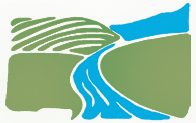Ag NPS Abatement & Control Grant Program (grant funds expired)
Historically, this grant program established in 1994 by the State of New York was established to assist farmers in preventing water pollution from agricultural activities by providing technical assistance and financial incentives. County Soil & Water Conservation Districts could apply for the competitive grants on behalf of farmers and coordinate funded activities. Grants can cost-share up to 75% of project costs or more if farm owners or operators contribute, in the following two areas:
- Planning; funds awarded to conduct environmental planning
- Implementation; funds awarded to construct or apply management practices
The New York State Soil & Water Conservation Committee and the Department of Agriculture & Markets coordinate the statewide program and allocate funds provided by the NYS Environmental Protection Fund on a semi-annual basis.
Since the program began in 1994 more than $50 million has been awarded to 53 Soil & Water Conservation Districts across the state to help farmers reduce and prevent agricultural sources of Nonpoint Source (NPS) Pollution. Wayne County Soil and Water Conservation District began agricultural planning strategically in 2009 and has over 40 farm plans in the works. Prior to planning at the District, the Natural Resource Conservation Service did farm planning and the District assessed in implementation of Best Management Practices (BMPs) through grant programs in the Sodus Bay Watershed, in 2005.
Because of these efforts, the District has been able to secure five (5) grants through this program to assist over 25 farms with cost share for environmental impacts through BMP installation.
What is Nonpoint Source Pollution?
The primary cause of New York’s remaining water quality challenges can be attributed to a wide array of pollutants resulting from various types of land uses, which is termed nonpoint source (NPS) pollution.
As rainfall or snowmelt moves over and through the ground, the runoff picks up and carries away natural and human-made pollutants, finally depositing them into lakes, rivers, wetlands, coastal waters, and even our underground sources of drinking water. These pollutants include:
- Excess fertilizers, herbicides, and insecticides from residential areas and agricultural lands
- Oil, grease, and toxic chemicals from urban runoff and energy production
- Sediment from improperly managed construction sites, crop and forest lands, and eroding streambanks
- Salt from roadways, irrigation practices, and acid drainage from abandoned mines
- Bacteria and nutrients from livestock, pet wastes and faulty septicsystems
- Atmospheric deposition and hydromodification
